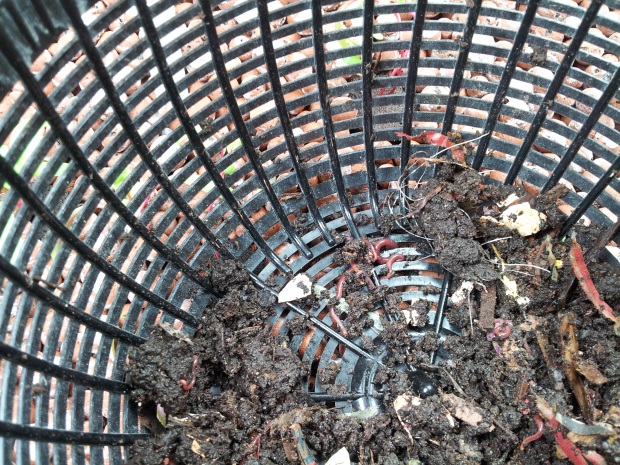A lot of the talk around aquaponics is about how sustainable it is. Locally produced food, sticking it to the man, no gmo’s, and all that crap. Well, don’t get too excited folks. Like pretty much all forms of agriculture, aquaponics requires inputs of fertilizer and energy to produce food. By fertilizer, I mean food for fish and some extra just for plants. This is not different from soil gardening, where, unless you are a diligent humanure practitioner, you also need to bring in fertilizer for the garden or you will eventually deplete the soil. So at some point in your aquaponics journey, you will need to look at your inputs and their sustainability.
My small garden with 8 small goldfish is currently being fed ordinary goldfish pellets, and a homemade gel food. The pellets are made with salmon meal and other ingredients, and the gel has tuna, clams, anchovies, carrot, peas, cilantro, garlic, red pepper, kelp meal, lentils, gelatin and vitamins. The homemade gel food is what goldfish enthusiasts feed their fish. Apparently, if a goldfish is to survive to its purported lifespan, it needs to eat veggies. You’ll notice that salmon and tuna, two high-on-the-food-chain (I know, it’s a web) species of fish with population issues form a large percentage of the diet. So I’m turning endangered carnivores into lettuce. I console myself that if I was simply keeping these fish as pets, the waste would simply be flushed, rather than turning into anything at all, but still, there must be a better way. This issue actually kept me from pursuing aquaponics earlier, but work is being done on this and I’m more confident now that there are solutions.
Fish feed, whether for aquariums or fish farms, is currently made largely from whole purpose caught fish, and byproducts from human food fish processing. The whole fish are mostly those small oily fish that people don’t prefer, like anchovies, capelin, herrings, and sardines. I’m not convinced that these are being sustainably fished, but even if they were, there are never going to be more of these fish produced than there are now, and demand is growing, so alternatives have to be found. Carassius auratus, (that’s a fancy way of saying goldfish), is actually a filter feeder. In the wild, it swims around the bottom of ponds scooping up plankton and muck, with the occasional egg or bug for dessert. They are most certainly not eating salmon or tuna, or even anchovies. I think there’s a clue here.
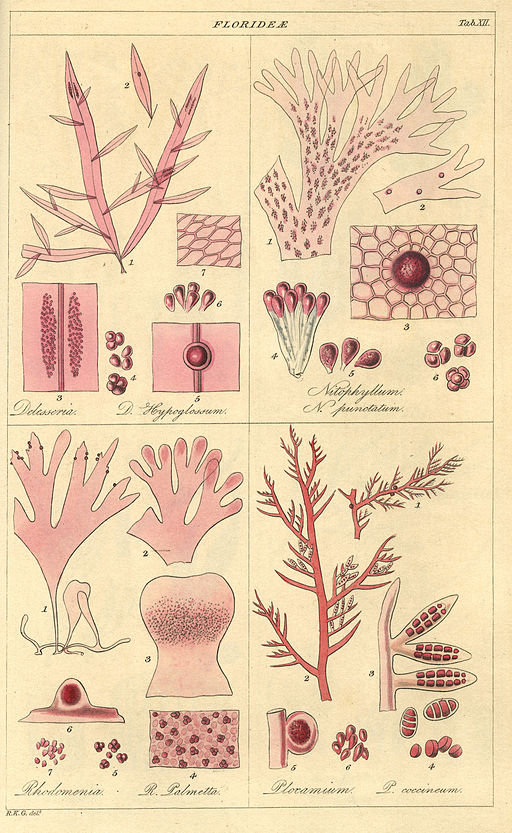
William Miller [Public domain], via Wikimedia Commons
Algae (phytoplankton) and protozoa (zooplankton) are apparently rather easy to grow, as anyone who has had an algae problem in their aquarium or swimming pool can attest. They do not require salmon fillets for nutrition. Any kind of decaying organic matter will feed them, but people also feed them synthetic npk fertilizers. Duckweed is an aquatic plant that is easy to grow and high in protein. It can be grown out from a small sample in nutrient rich water. There we go with the nutrients again. I’m tempted to suggest that a duckweed tank could be incorporated into an aquaponics garden, and it often is, but don’t fool yourself that you could replace any feed inputs that way.
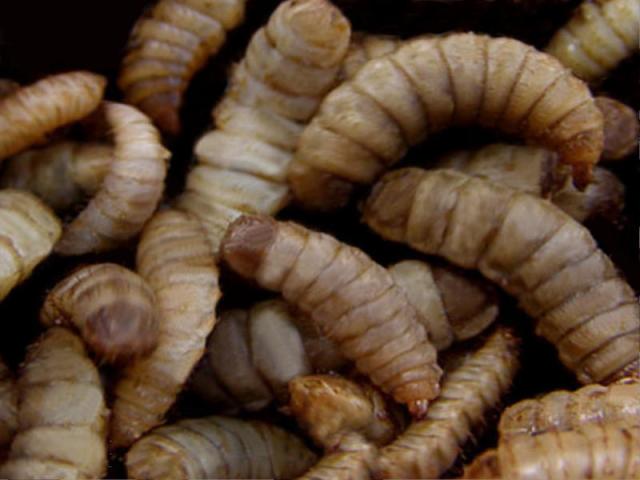
Hermetiaillucens, Black Soldier Fly Larvae: yum!
Bugs are fairly easily (once the appropriate infrastructure is built) grown on food waste, and certainly help close the loop. They are also high in fats and protein and if we ourselves are too fastidious to eat them directly, feeding them to fish and other animals as a replacement for fishmeal makes a lot of sense. Even the most carnivorous of fish can live on insect protein. There are currently some companies pursuing the large scale production of soldier fly larvae from food waste for aquaculture feed, which may make purchasing ready made sustainable fish feed easier in the future. Black soldier flies are native and common to most of the US, but do not exist in the wild in most areas of Canada. I do not live in one of those rare, milder areas of Canada, so I may have to let others raise them for me.
I’ll be continuing to research alternatives to commercial fish feed. There are quite a few people doing work in this area, and it’s encouraging to see that many of the solutions are diy. Of course, commercial feeds are formulated to provide optimum nutrition in a convenient form, and it’s easy to see that diy options may have unintended consequences in terms of the health of the fish and overall system.
 I’ve changed the diet back from the homemade gel food I blogged about earlier, to a premium pellet for a couple of reasons. The first is that I’ve been sick the last couple of months and I just haven’t had the energy to make the gel, especially since as the fish grew they were eating much more of it. The second is that I’ve found a really good Canadian fish food, Northfin, that contains relatively low-on-the-food-chain ingredients like krill, herring and sardines and no crap fillers. I picked up a small package at the fish store to try it out, and the fish seemed to enjoy it, but at $10 per 100g it was outrageously expensive. I was able to order a 2.5kg bag online for $80, which is still pretty dear, but should last a good while. These are well-fed fish, in both quality and quantity, and I’m sure that that, along with good water quality, explains their impressive growth.
I’ve changed the diet back from the homemade gel food I blogged about earlier, to a premium pellet for a couple of reasons. The first is that I’ve been sick the last couple of months and I just haven’t had the energy to make the gel, especially since as the fish grew they were eating much more of it. The second is that I’ve found a really good Canadian fish food, Northfin, that contains relatively low-on-the-food-chain ingredients like krill, herring and sardines and no crap fillers. I picked up a small package at the fish store to try it out, and the fish seemed to enjoy it, but at $10 per 100g it was outrageously expensive. I was able to order a 2.5kg bag online for $80, which is still pretty dear, but should last a good while. These are well-fed fish, in both quality and quantity, and I’m sure that that, along with good water quality, explains their impressive growth.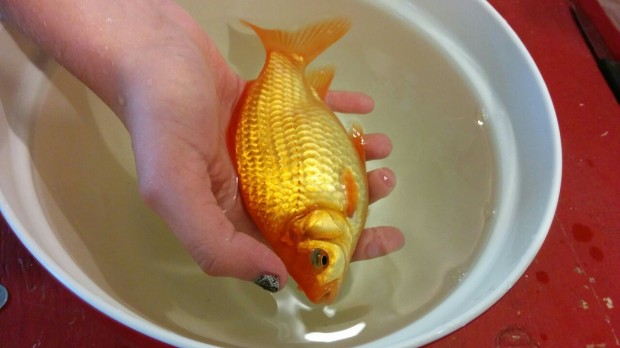

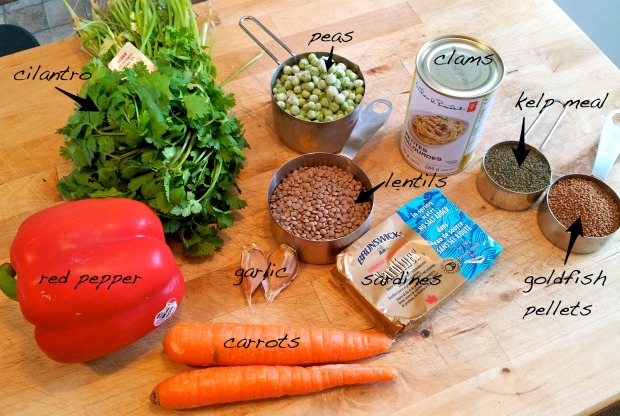

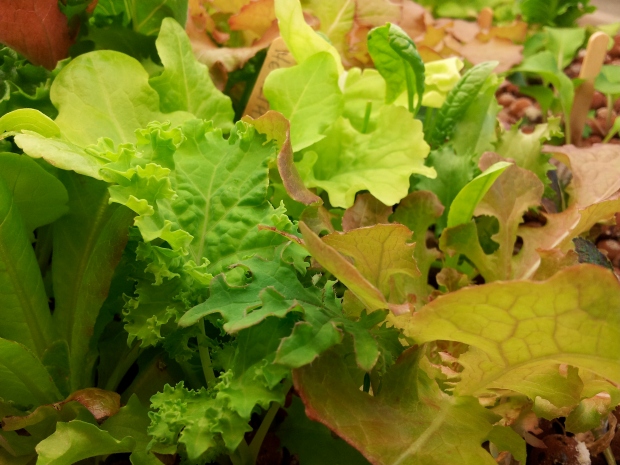
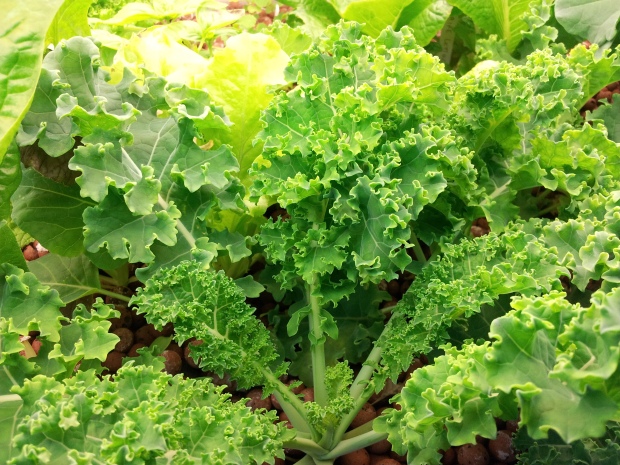
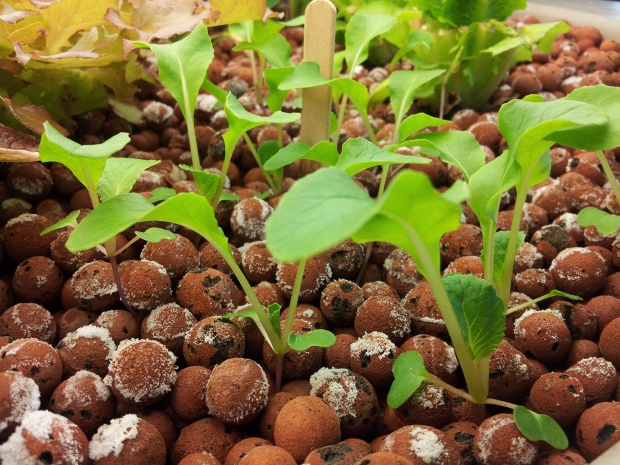
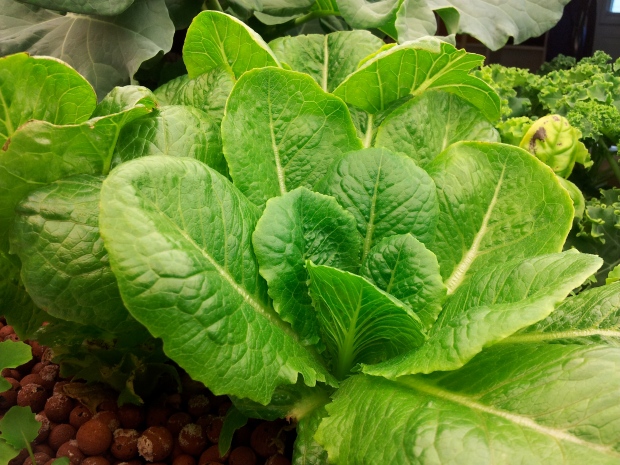

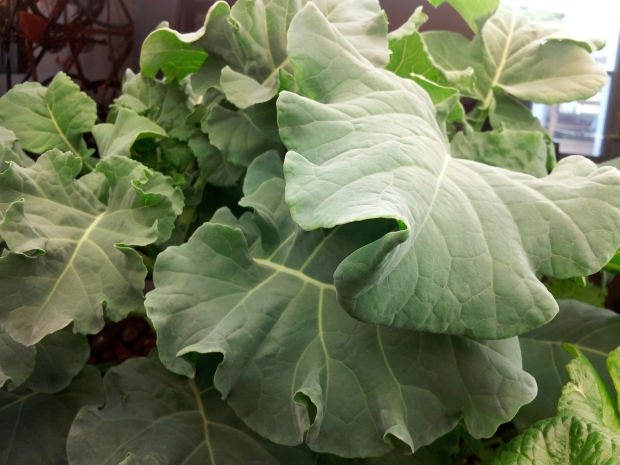

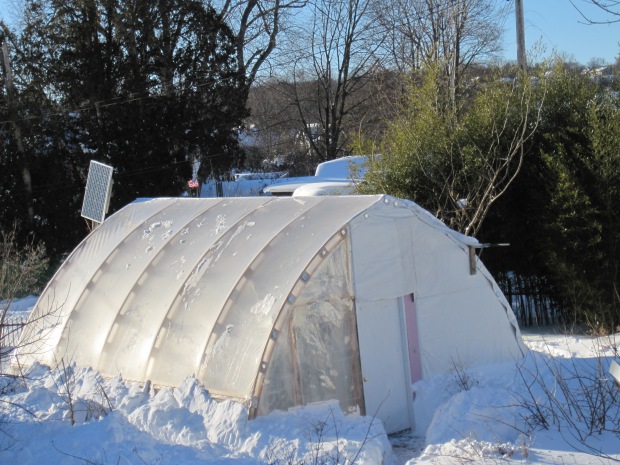
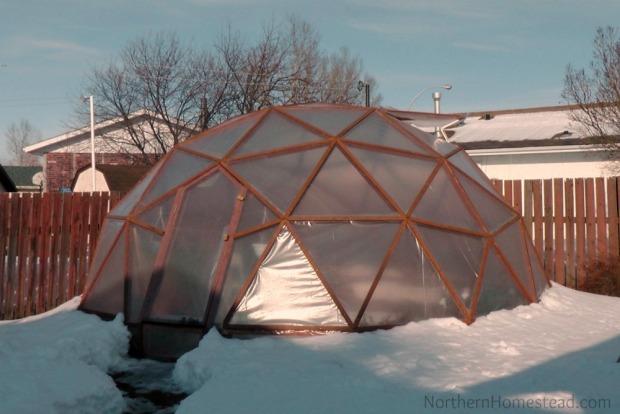
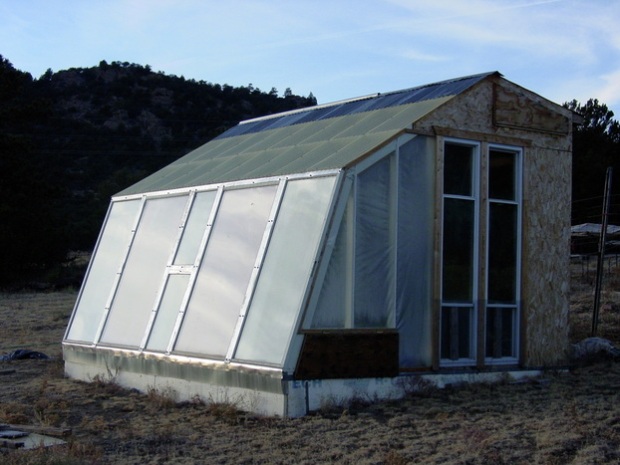
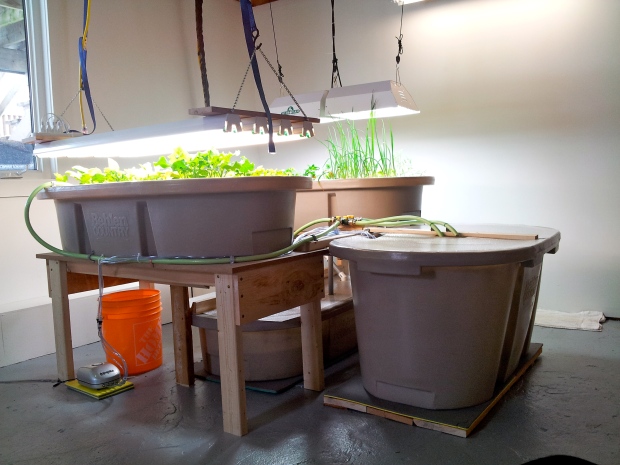
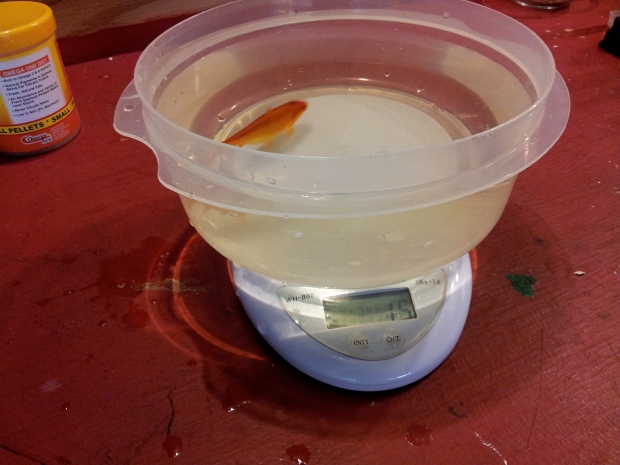
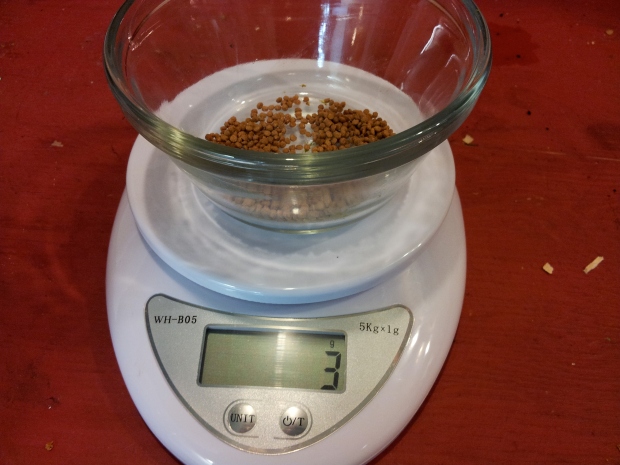




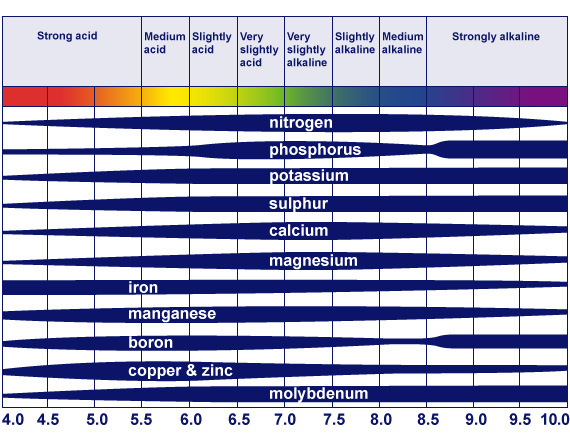 So what to do? Lowering the ph is difficult and risky, because the fish are going to be negatively affected by any change of more than 0.2 in a day. The carbonates in the water that cause the ph to be high, also buffer the ph so that it remains stable. It is difficult to change the ph by a little – you keep adding acid with no apparent effect, then the ph crashes and fish die. Luckily, the natural nitrifying process actually consumes carbonates, slowly but steadily. What I have begun to do is to treat the top up water with hydrochloric acid (also known as muriatic acid) in a bucket for a day or so before I add it to the system. I drop the ph of the water in the bucket to 6, which consumes carbonates. When I add the water, slowly over the next day, it doesn’t change the ph of the system noticeably but neither does it contribute additional carbonates to the system. This means that the carbonates in the water will actually decrease through nitrification instead of being constantly replenished. It may take some months before my ph is in the perfect range, but it will have happened safely.
So what to do? Lowering the ph is difficult and risky, because the fish are going to be negatively affected by any change of more than 0.2 in a day. The carbonates in the water that cause the ph to be high, also buffer the ph so that it remains stable. It is difficult to change the ph by a little – you keep adding acid with no apparent effect, then the ph crashes and fish die. Luckily, the natural nitrifying process actually consumes carbonates, slowly but steadily. What I have begun to do is to treat the top up water with hydrochloric acid (also known as muriatic acid) in a bucket for a day or so before I add it to the system. I drop the ph of the water in the bucket to 6, which consumes carbonates. When I add the water, slowly over the next day, it doesn’t change the ph of the system noticeably but neither does it contribute additional carbonates to the system. This means that the carbonates in the water will actually decrease through nitrification instead of being constantly replenished. It may take some months before my ph is in the perfect range, but it will have happened safely.
